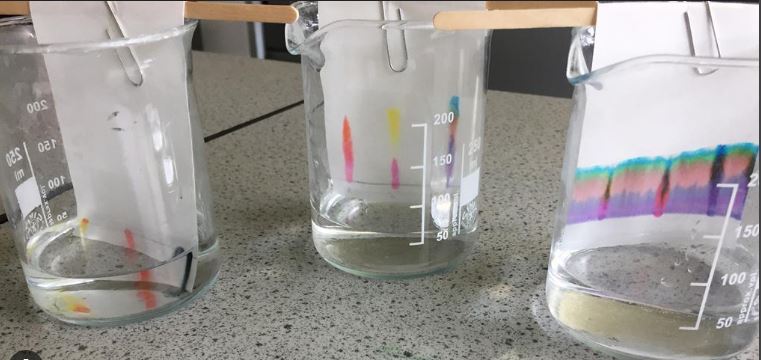IChemical thermodynamics is a branch of chemistry that studies the relationships between heat, work, and energy changes in chemical reactions and physical processes. Understanding these principles is crucial for predicting how reactions will occur and for designing efficient chemical processes. This article covers the fundamental concepts of chemical thermodynamics, including key laws, concepts, and applications.

Chemical Thermodynamics Basics
Fundamental Concepts
System and Surroundings
In thermodynamics, a system refers to the part of the universe being studied, while the surroundings are everything else. Systems can be open (exchanging both matter and energy), closed (exchanging only energy), or isolated (not exchanging matter or energy).
Internal Energy
Internal energy is the total energy contained within a system, including kinetic and potential energies of the molecules. It changes with the heat added to the system and the work done by or on the system.
Heat (q)
Heat is the energy transferred between systems or surroundings due to a temperature difference. It flows from regions of higher temperature to regions of lower temperature.
Work (w)
Work is the energy transferred when a force is applied over a distance. In thermodynamics, work can be done by the system on its surroundings or vice versa.
Enthalpy (H)
Enthalpy is a measure of the total heat content of a system, defined as H=U+PVH = U + PV, where UU is internal energy, PP is pressure, and VV is volume. changes (ΔH) are used to describe heat changes in chemical reactions at constant pressure.
Entropy (S)
Entropy is a measure of the disorder or randomness in a system. It reflects the number of possible microstates corresponding to a given macrostate. Entropy tends to increase in spontaneous processes, in accordance with the Second Law of Thermodynamics.
Laws of Thermodynamics
First Law of Thermodynamics
The First Law of Thermodynamics, also known as the Law of Energy Conservation, states that energy cannot be created or destroyed, only transformed from one form to another. Mathematically, it is expressed as:
ΔU=q−w\Delta U = q – w
where ΔU\Delta U is the change in internal energy, qq is heat added to the system, and ww is work done by the system.
Second Law of Thermodynamics
The Second Law of Thermodynamics states that the total entropy of an isolated system always increases over time. It can be expressed through the concept of spontaneity in processes:
ΔSuniverse=ΔSsystem+ΔSsurroundings≥0\Delta S_{universe} = \Delta S_{system} + \Delta S_{surroundings} \geq 0
where ΔS\Delta S represents the change in entropy.
Third Law of Thermodynamics
The Third Law of Thermodynamics states that as the temperature of a system approaches absolute zero, the entropy of a perfect crystal approaches zero. This law helps establish the absolute scale of entropy:
Scrystal→0 as T→0 KS_{crystal} \rightarrow 0 \text{ as } T \rightarrow 0 \text{ K}
Gibbs Free Energy (G)
Gibbs Free Energy combines enthalpy and entropy to predict the spontaneity of a process at constant temperature and pressure. It is defined as:
G=H−TSG = H – TS
where GG is Gibbs free energy, HH is enthalpy, TT is temperature, and SS is entropy. For a process to be spontaneous, ΔG\Delta G must be negative:
ΔG=ΔH−TΔS\Delta G = \Delta H – T\Delta S
Thermodynamic Processes
Isothermal Processes
In an isothermal process, the temperature of the system remains constant. According to the ideal gas law, the relationship between pressure and volume in an isothermal process is given by:
PV=constantPV = \text{constant}
Adiabatic Processes
In an adiabatic process, no heat is exchanged with the surroundings. The change in internal energy is equal to the work done on or by the system:
ΔU=−w\Delta U = -w
Isobaric Processes
An isobaric process occurs at constant pressure. The work done in an isobaric process is given by:
w=PΔVw = P \Delta V
Isochoric Processes
An isochoric process occurs at constant volume. No work is done in an isochoric process, and the change in internal energy is equal to the heat added or removed:
ΔU=q\Delta U = q
Applications of Chemical Thermodynamics
Chemical Reactions
Chemical thermodynamics helps predict whether a chemical reaction will occur spontaneously. By calculating Gibbs free energy changes, chemists can determine the feasibility of reactions and optimize reaction conditions.
Phase Changes
Thermodynamics is used to understand phase transitions, such as melting, boiling, and sublimation. The phase diagram of a substance, which plots pressure versus temperature, shows the conditions under which different phases exist.
Biochemical Processes
In biochemistry, thermodynamics explains metabolic reactions and energy transformations within living organisms. Understanding enzyme kinetics and reaction pathways relies on thermodynamic principles.
Industrial Processes
Industrial applications of thermodynamics include optimizing chemical manufacturing processes, designing energy-efficient systems, and controlling reaction conditions to maximize yields and minimize energy consumption.
Conclusion
Chemical thermodynamics provides essential insights into the behavior of energy and matter in chemical processes. By understanding fundamental concepts like internal energy, enthalpy, entropy, and Gibbs free energy, scientists and engineers can predict reaction spontaneity, optimize processes, and improve efficiency in various applications. Mastery of thermodynamics principles is crucial for advancing both theoretical and practical chemistry.



